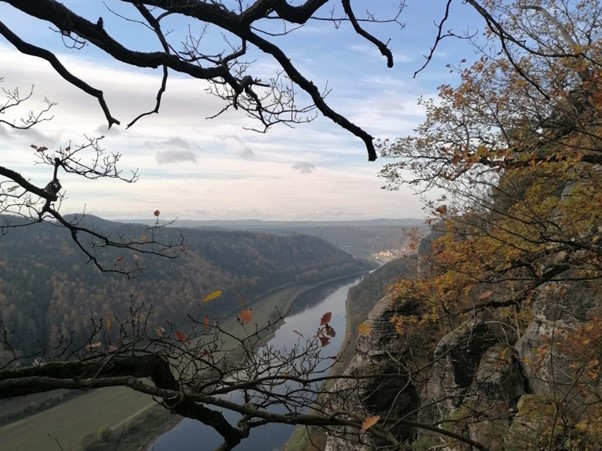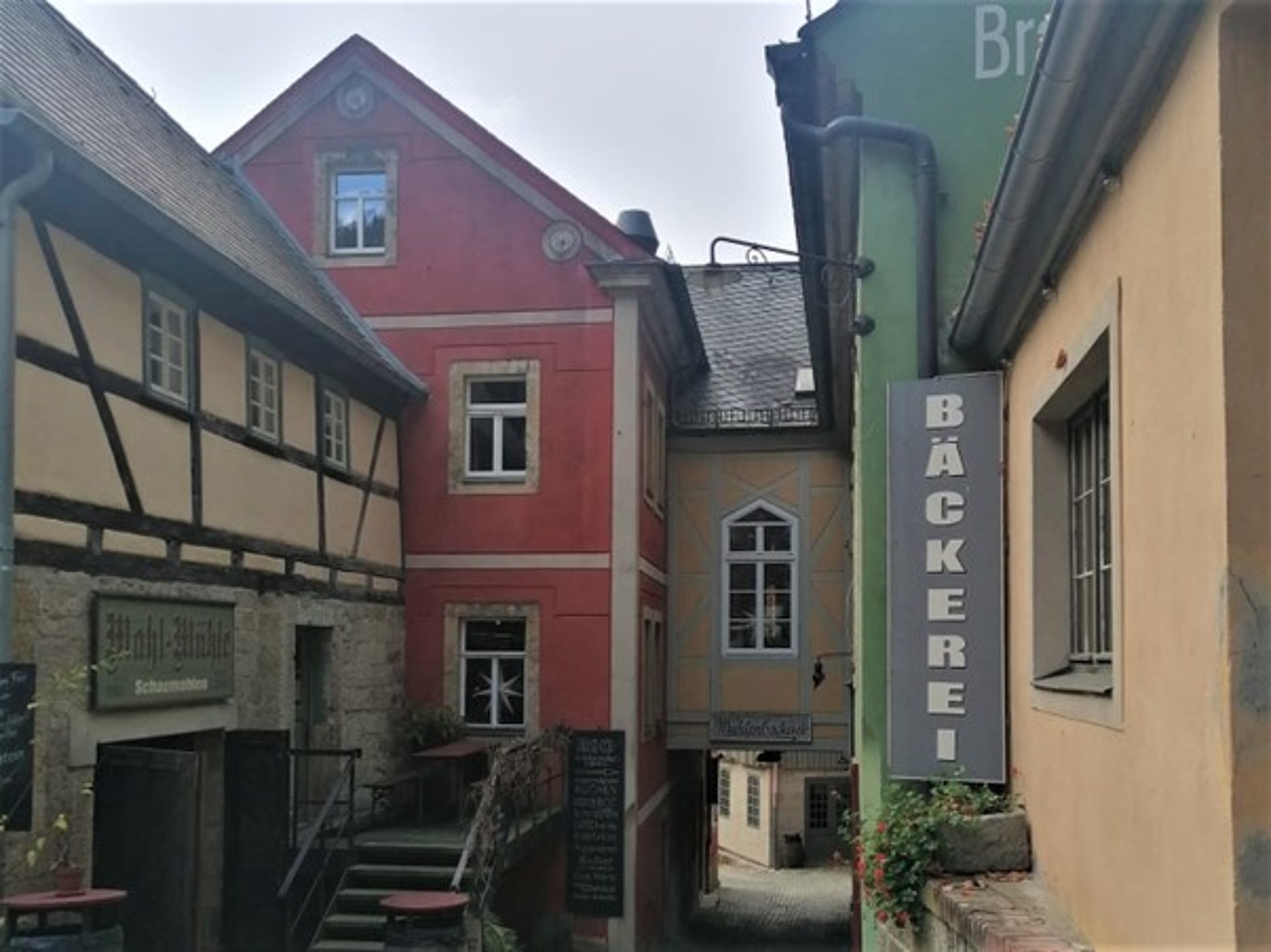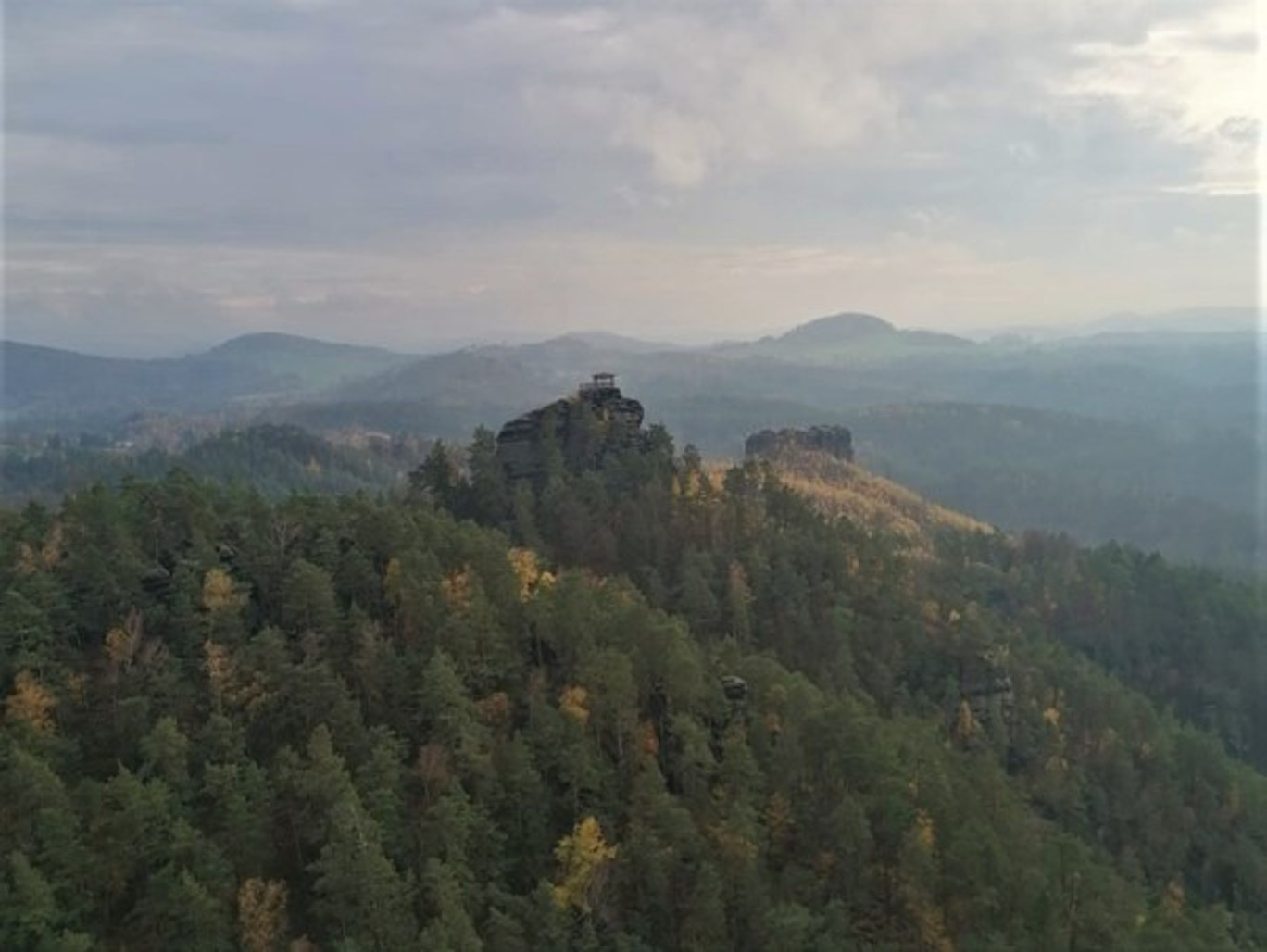The third-semester students on the Bachelor's degree course in Tourism Management went on a field trip on the topic of "Strategies for the sustainable development of tourism taking climate change into account in cross-border tourism destinations - the example of Saxon-Bohemian Switzerland".

Author: Susanna Marek
Photos: Edda Liebig
The studies of our tourism managers are always enriched by insights into practice. This is also the case in the Destination Management module in the third semester. For all "non-tourists": destination management is the strategic management and marketing of tourist destinations. The module content is consolidated on excursions and experienced first-hand in practice. And what better place to do this than the nearby, beautiful Saxon-Bohemian Switzerland National Park?

The excursion started at 8:00 a.m. with the departure on Brückenstraße. Two hours later, the tourism managers reached their meeting point with Ms. Nicole Hesse, the project manager for the winter season of the Saxon Switzerland Tourism Association, on the Bastei. During the discussion about tourism marketing in Saxon Switzerland, which included a tour of the Bastei, the most famous rock formation in the mountains, she told the students what makes this region so special as a destination. She explained the current problems that the destination has to contend with. These include, above all, the stagnating labor situation as a result of the coronavirus pandemic and the increasingly frequent forest fires and their consequences. Ms. Hesse also presented her own work at the tourism association. Afterwards, the students were able to ask their questions.
After a quick shop at Lidl in Bad Schandau (students have to eat too ;)), the next item on the excursion's agenda was the Schmilka Organic and National Park Refuge. The meeting point was the mill, built in 1655, where flour is still milled today. Ms. Andrea Bigge guided our tourists past quaint half-timbered houses and through the organic bakery and brewery manufactory of the "most beautiful village in Saxony". Finally, they visited the winter village, which was awarded the OSV Tourism Prize in 2018 for its concept as a "beacon of the tourism industry".
Afterwards, the students moved into their rooms at the Aktivhotel Stock&Stein, their accommodation for the excursion in Saxon-Bohemian Switzerland.

The second day of the excursion began with a visit to the 5-star Hotel Elbresidenz in Bad Schandau. Axel Hausmann, Residence Manager of the Toscana Therme and the Hotel Elbresidenz, told the students about his work. This was followed by a tour of the hotel, including the hotel's restaurants, various rooms and a suite, as well as the bar and spa area.
After the students were able to look around the hotel on their own, they had an appointment with Ms. Stefanie Engelbrecht at the Saxon Switzerland National Park Centre at 13:00. The focus was on the question of what distinguishes Saxon Switzerland as a national park and why a discussion about national park status has flared up in the region following the devastating fire in August this year. The students then visited the exhibition at the National Park Center. The last item on the excursion program for the day was a visit to the national park railway station in Bad Schandau. From there, guests can easily reach the hiking hotspots of Saxon-Bohemian Switzerland by public transport buses. At the station, tourists will also find a vending machine selling regional products for the journey.

To round off the excursion, our students took on the role of holidaymakers themselves: a hike was on the agenda. At 8:00 in the morning, the bus drove to the neighboring Czech Republic and past forest areas that had been completely burned down in places by the fire. In Jetrichovice, our tourists met up with national park ranger Heiko Hesse, who led them through Bohemian Switzerland and informed them about the Czech part of the national park. During the four-hour hike across meadows, rocks and through forests, the students gained an insight into the attractions of a national park and hiking tourism. In between, they relaxed during a lunch break with typical Czech dishes. The hike ended at the Marienfelsen rock and the viewpoint there.
After this highlight, our tourists returned home.
The excursion to Saxon-Bohemian Switzerland provided the students with many new insights. They developed an understanding of what cooperation between the tourism association, national park, tourism service providers and residents can look like in the interests of preserving the national park while at the same time using it for tourism.
Once again, our tourism managers learned a lot on their trip. If you also want to learn more about tourism on the road and on excursions or want to gain practical insights during your studies, then apply here!
